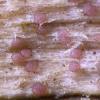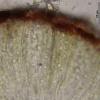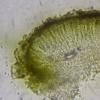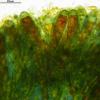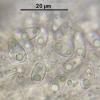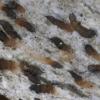
12-11-2025 09:25
 Viktorie Halasu
Viktorie Halasu
Hello, I need help with a pale terrestric Pseudom

11-11-2025 20:16
Bohan JiaHi, lastly I have found these tiny yellow decayin

09-11-2025 13:20
Hello.A tiny ascomycete, appearing as erupting gra

08-11-2025 00:29
 Francois Guay
Francois Guay
I found this species in Quebec, Canada, on herbace
Agyrium or what?
Hans-Otto Baral,
04-04-2017 22:40
 On the upper side of fallen, decorticated, +/- undecayed logs of Picea and Pinus, found in association with Tromeropsis microtheca and Claussenomyces atrovirens in Tübingen-Pfrondorf, Hägnach, 26.III. & 2.IV.2017, E. Weber & H.O. Baral. On whitish areas of wood, not lichenised Asci with inamyloid tholus but outer wall hemiamyloid (red, hardly any blue at low concentration). Sporex ca. *12-13 x 5.3-5.5 µm.
On the upper side of fallen, decorticated, +/- undecayed logs of Picea and Pinus, found in association with Tromeropsis microtheca and Claussenomyces atrovirens in Tübingen-Pfrondorf, Hägnach, 26.III. & 2.IV.2017, E. Weber & H.O. Baral. On whitish areas of wood, not lichenised Asci with inamyloid tholus but outer wall hemiamyloid (red, hardly any blue at low concentration). Sporex ca. *12-13 x 5.3-5.5 µm.We thought it should be an Agyrium, and actually it is very similar to A. rufum, but it differs:
- spores narrower, with a lower, more biguttulate oil content
- more purplish-rose instead of orange exudate
- smaller apothecia (0.17-0.3 vs. 0.25-0.5 mm)
- IKI almost RR (vs. clearly RB in A. rufum)
We found this drought-tolerant species in great abundance, but only on the exposed upper side.
There seems to be a lack of literature about this genus.
Zotto
Hans-Otto Baral,
05-04-2017 21:47
Zdenek Palice,
14-05-2017 17:47
Re : Agyrium or what?
Hallo,
My suggestion is it belongs to a lichenized stuff, i.e. to Xylographa trunciseda, the thallus should be hidden below wood surface as dispersed goniocyst-granules visible as darker spots when twe wood is moistured, it should contain a lichen substance confriesic acid (UV +blue-white) that is known e.g from xylopsora caradocensis and X. friesii (= Hypocenomyce f.)
the recent monograph of Xylographa by Spribille et al. 2014 (where X. trunciseda is introduced as new to Germany from Bavarian forest) is available for download: http://geobotanik.uni-goettingen.de/images/forschung/publikationen/publ_spribille/Xylographa_final.pdf
I myself collected the species in Scandinavia and Caucasus.
In central Europe it seems to be more rare
Zdenek
My suggestion is it belongs to a lichenized stuff, i.e. to Xylographa trunciseda, the thallus should be hidden below wood surface as dispersed goniocyst-granules visible as darker spots when twe wood is moistured, it should contain a lichen substance confriesic acid (UV +blue-white) that is known e.g from xylopsora caradocensis and X. friesii (= Hypocenomyce f.)
the recent monograph of Xylographa by Spribille et al. 2014 (where X. trunciseda is introduced as new to Germany from Bavarian forest) is available for download: http://geobotanik.uni-goettingen.de/images/forschung/publikationen/publ_spribille/Xylographa_final.pdf
I myself collected the species in Scandinavia and Caucasus.
In central Europe it seems to be more rare
Zdenek
Hans-Otto Baral,
14-05-2017 21:32

Re : Agyrium or what?
Hallo Zdenek!
many thanks for your interesting comment. I compared the description and indeed there seems to be a lot that supports your identification. What I miss is the rose-violet hymenial colour and also the KOH reaction changing this colour to yellowish-olive. Might this be due to the old age of the studied material? But some are quite recent, e.g., 2011, see GenBank KJ462330.
Zotto
many thanks for your interesting comment. I compared the description and indeed there seems to be a lot that supports your identification. What I miss is the rose-violet hymenial colour and also the KOH reaction changing this colour to yellowish-olive. Might this be due to the old age of the studied material? But some are quite recent, e.g., 2011, see GenBank KJ462330.
Zotto
Zdenek Palice,
15-05-2017 11:45
Re : Agyrium or what?
Hallo Zotto,
the pigments are strange indeed, I just screened one of my specimens of Xylographa trunciseda collected last year and no such purplish pigment that you pointed out, was able to observe. Perhaps it may be a related taxon to X. trunciseda, it would be interesting to find the chemistry, also you may try to ask Toby Spribille. Maybe I am wrong with Xylographa
all the best
Zden?k
Hans-Otto Baral,
15-05-2017 11:51

Re : Agyrium or what?
I am sending today a couple of samples for sequencing for the ITS and will try to include also this one.
Xylographa seems to have a very special way of the apothecia to grow in one direction. I know this from X. parallela, see here. Nothing like that I saw in the present fungus.
In any case, these Xylographas look interesting and I will take care of them when collecting in the future.
Zotto
Xylographa seems to have a very special way of the apothecia to grow in one direction. I know this from X. parallela, see here. Nothing like that I saw in the present fungus.
In any case, these Xylographas look interesting and I will take care of them when collecting in the future.
Zotto
Zdenek Palice,
15-05-2017 11:59
Re : Agyrium or what?
Good idea! Zd

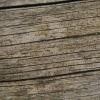
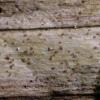
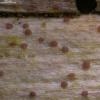
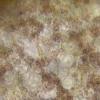
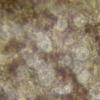
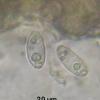
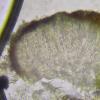
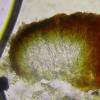
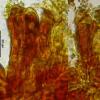
 9Lichen-HB-10051b-8-IKI-0001.jpg
9Lichen-HB-10051b-8-IKI-0001.jpg